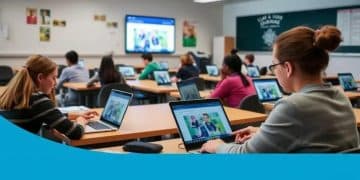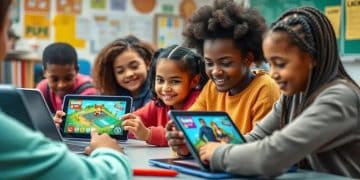Teacher AI tools 2025 trends reshaping education
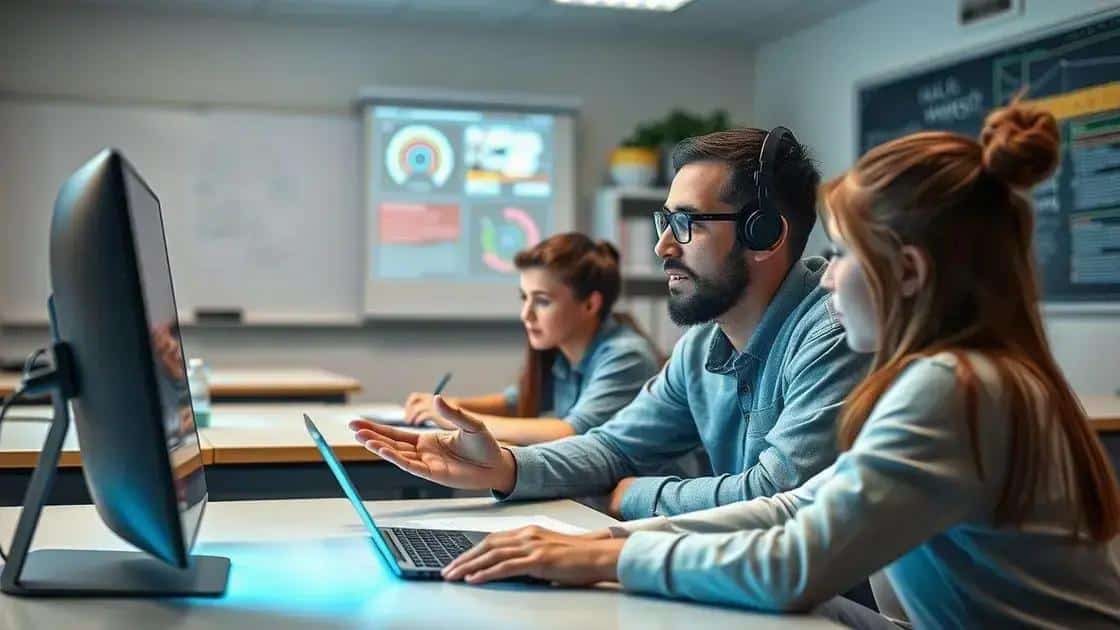
Teacher AI tools for 2025 will enhance education through personalized learning, immersive experiences, and improved teacher support, fostering a more engaging and effective classroom environment.
Teacher AI tools 2025 trends are poised to transform the educational landscape. As technology advances, it’s essential to understand the implications these tools have for teaching methods and student engagement.
The evolution of AI tools in education
The evolution of AI tools in education has been rapid and fascinating. From simple learning aids to sophisticated platforms, technology is reshaping how teachers interact with students.
Key Developments
Significant advancements have paved the way for improved classroom experiences. These changes are not just about technology; they are about enhancing learning outcomes for students.
- Increased personalization: AI tools can tailor educational experiences to meet individual student needs.
- Data-driven insights: Teachers can access analytics that help understand student performance better.
- Enhanced engagement: Interactive AI applications make learning more appealing to students.
As we look at the broader picture, the integration of AI tools has become essential. They provide teachers with resources that can streamline lesson planning and assessment, making the educational process smoother.
The Role of Machine Learning
Machine learning algorithms play a key role in this evolution. They analyze vast amounts of data, helping educators identify patterns in learning behavior. This predictive analysis can significantly inform teaching strategies.
The journey of AI in education is still ongoing. With new tools and technologies emerging, there’s immense potential for the future. Collaborations between tech companies and educational institutions are crucial for advancing these developments.
Key features of teacher AI tools for 2025
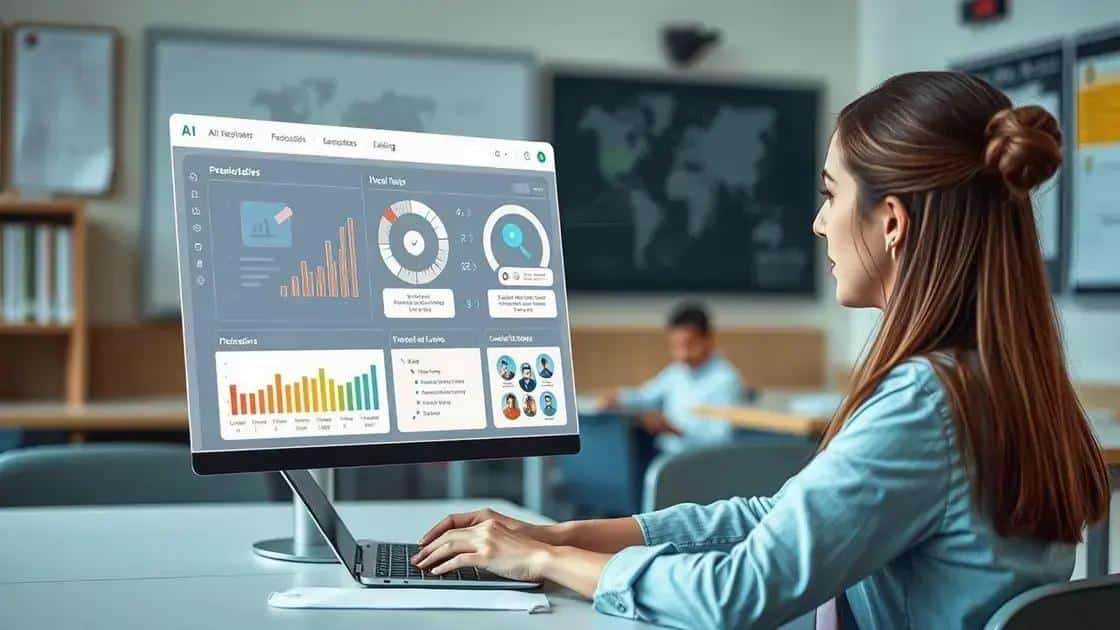
As we examine the key features of teacher AI tools for 2025, it’s clear that these innovations are designed to enhance the educational experience. These tools will not only facilitate teaching but also empower students to take control of their learning.
Personalization
A major aspect of AI tools is their ability to personalize learning. By analyzing data from various sources, these systems can provide customized lessons that cater to individual learning styles.
- Adaptive learning paths based on student performance
- Feedback tailored to specific needs
- Engagement tools that resonate with different students
This personal touch helps maintain student interest and facilitates better understanding of the material. Furthermore, AI tools can offer constant feedback to both teachers and students, helping them gauge progress effectively.
Data-Driven Insights
Another essential feature is the ability to generate data-driven insights. Teachers can make informed decisions using analytics provided by these tools. They can monitor class performance and identify areas where students struggle.
By integrating AI tools into the classroom, teachers can create a more effective learning environment. They gain access to real-time analytics, enabling them to adjust their teaching methods according to student needs.
Automation of Administrative Tasks
Additionally, AI tools can automate many administrative tasks. This allows teachers to focus more on instruction rather than paperwork. With time saved, educators can spend more energy on engaging with students and developing robust lesson plans.
The future of education with AI tools promises to be not only efficient but also immensely beneficial for student learning outcomes. Teachers can look forward to innovative features designed to support their teaching journey.
Benefits of using AI in the classroom
The benefits of using AI in the classroom are transforming education. As technology advances, it supports educators in numerous ways, enhancing both teaching and learning.
Improved Engagement
AI tools make learning fun and interactive. Students are more likely to engage with content that adapts to their interests and pace. By employing gamified learning experiences, AI captivates students, making lessons memorable.
- Interactive simulations that allow hands-on learning
- Real-time feedback that encourages improvement
- Personalized learning experiences cater to different learning styles
This individualized attention not only boosts student confidence but also promotes a deeper understanding of the material.
Efficiency for Teachers
AI also brings efficiency to teachers’ daily tasks. By automating grading and administrative work, it frees up time for educators to focus on instruction and student interaction. Teachers can dedicate more time to what truly matters: helping students succeed.
Moreover, AI tools can analyze student data to identify trends and areas needing improvement, allowing educators to adjust their strategies promptly. This helps create a more effective learning environment.
Enhancing Accessibility
Accessibility is another critical area where AI shines. Tools can assist in breaking down barriers to learning for students with disabilities. Personalized content can adjust to different needs, ensuring every student receives the support they require.
As we explore the benefits of using AI in the classroom, we see that it plays a crucial role in not only enhancing learning outcomes but also empowering teachers to provide better education.
Future predictions for teaching with AI
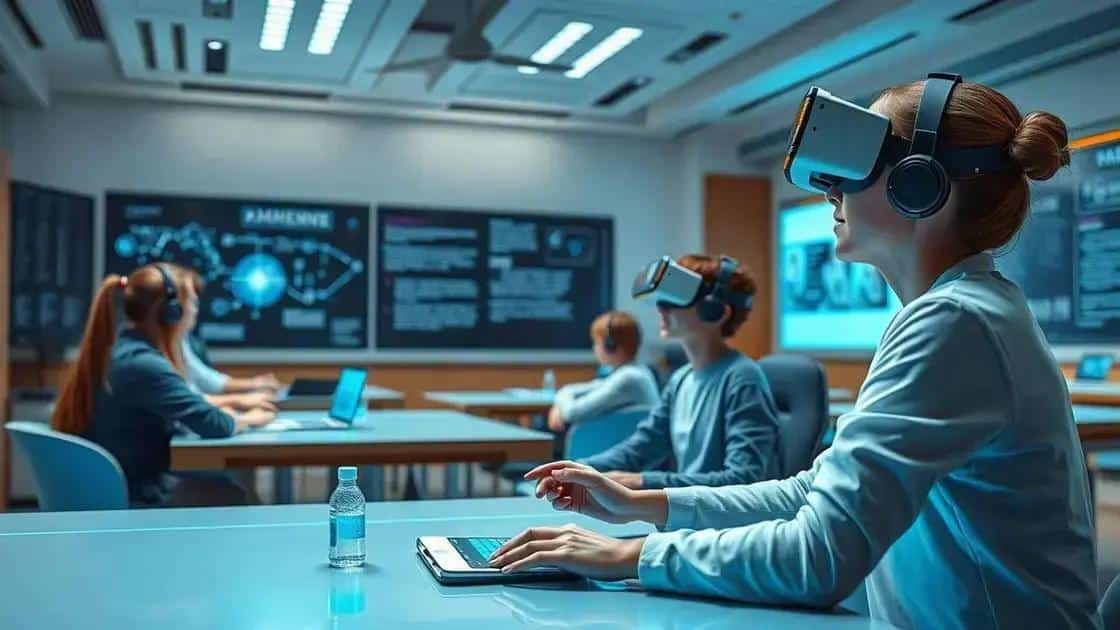
Future predictions for teaching with AI suggest that education will become even more personalized and efficient. Teachers are expected to play a crucial role that adapts alongside these advancements, focusing more on mentorship rather than traditional instruction.
Personalized Learning Experiences
One of the main trends is the growth of personalized learning experiences. With AI, students will receive tailored educational content that suits their individual strengths and weaknesses. This adaptation will happen in real-time, allowing them to engage with the material in a way that works best for them.
- Customized learning paths that adapt to student needs
- Immediate feedback on assignments and assessments
- Enhanced support through AI-driven tutoring systems
These advancements could lead to a significant decrease in the one-size-fits-all approach to education that has historically been common in classrooms.
Integration of Virtual and Augmented Reality
Additionally, AI will likely integrate with virtual and augmented reality, offering immersive learning experiences. Imagine students traveling through ancient civilizations or conducting science experiments in a virtual lab.
This kind of engagement can make learning more impactful by providing experiences that textbooks alone cannot offer. The combination of AI and immersive technologies will transform how subjects are taught, allowing for deeper exploration and interaction.
Teacher Support and Collaboration
AI will also change teacher support systems. Teachers will have access to data that highlights class performance trends, enabling them to adjust their strategies effectively. This data-driven approach empowers educators to better address the diverse needs of their students.
As we look at future predictions for teaching with AI, it’s evident that these technologies will play a significant role in fostering an environment where teachers can thrive and students can achieve their full potential.
FAQ – Frequently Asked Questions about AI tools in Education
How will AI personalize learning for students?
AI will analyze each student’s strengths and weaknesses, creating tailored learning experiences that cater specifically to their needs.
What are the benefits of AI for teachers?
AI helps teachers by automating administrative tasks, providing data-driven insights, and allowing more time to focus on student engagement.
How can AI enhance student engagement in the classroom?
AI can create interactive and gamified learning experiences, making lessons more enjoyable and memorable for students.
What role will virtual reality play in future education with AI?
Virtual reality will provide immersive learning experiences, allowing students to visualize concepts and engage with content in exciting new ways.




